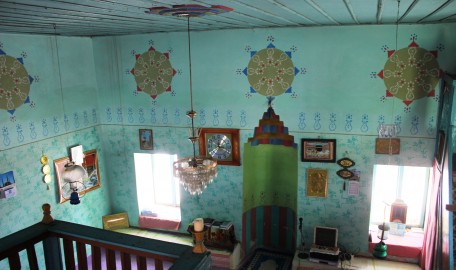Jul 07 - 2014

Prince Claus Fund, in the context of its Cultural Emergency Response Program in partnership with CHwB Kosovo office will co-fund the emergency interventions in two protected public cultural heritage sites in Kosovo that are in a deteriorated condition. This is a continuation of intervention in three other monuments, funded by Prince Claus Fund last year.
The cinema Lumbardhi (named after the river of the city Lumbardhi (Albanian) / Bistrica (Serbian)) is located in the Historic Center of Prizren. The cinema was built in the 50s of the 20th century. This building first housed the technology of projecting films through 35mm film tape, whereas this facility, for the past seven decades, has been used for a large number of cultural events. Lumbardhi Cinema is proof of the film (artistic) tradition of the city and has impacted the creation of the social and cultural identity of the community. The building has a simple architectural design, characteristic for the period of mid-20th century modernism. The cinema has been used in its original function until early ’90s. Since 2001, the building is partly used for organizing various cultural and artistic activities. For seven decades, the cinema has been accommodating a lot of cultural and artistic activities, by making it one of the most important areas of Prizren cultural scene. Lumbardhi cinema is in process of registration in the List of Cultural Heritage under Temporary Protection. It is soon to be registered as a designated monument.
The mosque of Zatriq village is considered the oldest one in the vicinity of Rahovec and is part of the List of Cultural Heritage under Temporary Protection. It is believed that the mosque was built in 1810. Half of the building was used for praying, whereas the other half served as elementary school / mejtep. In the courtyard of the mosque there are the graves of important religious personalities of Zatriq village. According to the villagers the building was once visited by believers from other regions (Peja, Gjakova), because at that time there was no another mosque in the territory. The institution has played an important role in building the knowledge of locals as well as in their social life. Local community see this mosque as a reference point to identify their origin and antiquity. The mosque is not fully used, one part of the building is used as mosque, whereas almost half of it is in very bad condition and is not used for any purpose.
Despite their national significance, these architectural heritage monuments are subject of deterioration due to the lack of maintenance, use, weathering conditions and wrong treatments.
The objectives of the project are:
– Regeneration of the historic, social and architectural values of the area;
– Enlightenment of the pride of locals for their cultural heritage;
– Improvement of the social-economic conditions of the area;
– Save the buildings from destruction;
– Provide access, enjoyment and education for all people without any differences;
– Appreciate heritage and capacity building.
The projects elaboration have started in mid July 2015, whereas the implementation of works are scheduled to end in December 2015.